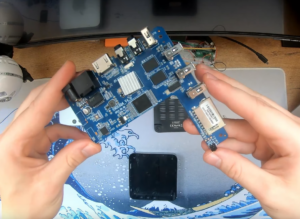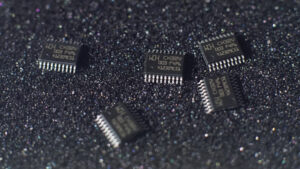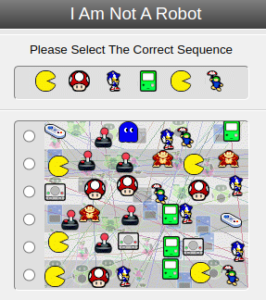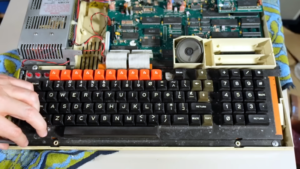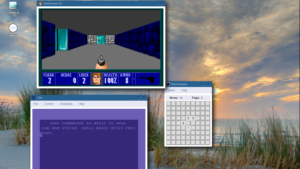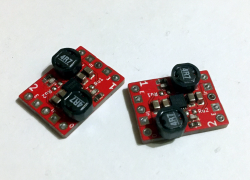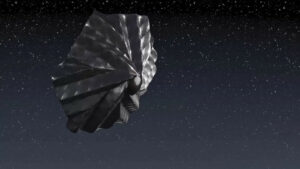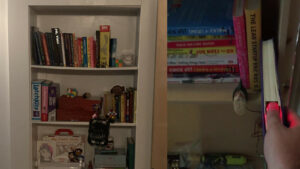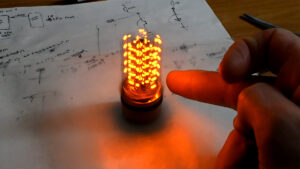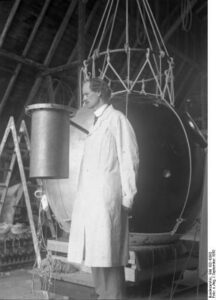Although we often regard our own bodies and those of the other multicellular organisms around us as a singular entity, each cell that makes up our body is its own, nano-robot. One long-existing question was whether these cells can be used for other tasks — like biological robots — after they have specialized into a specific tissue type, with a recent study by [Gizem Gumuskaya] and colleagues in Advanced Science (with Nature news coverage) indicating a potential intriguing use of adult human epithelial cells recovered from the trachea.
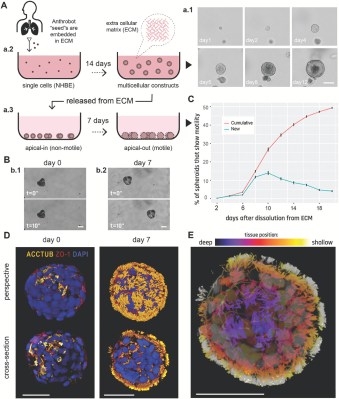
After extraction, these adult cells were kept in an extracellular matrix (ECM, Matrigel) in conditions promoting cell division, followed by ECM dissolution after 14 days and subsequent culturing of the spherical clumps of cells that had thus formed in a water-based, low-viscosity environment. This environment, along with the addition of retinoic acid promoted the development of outward-facing cilia, rather than the typical inward type with a gel-based ECM.
These spheroids (anthrobots, referencing their human origin) generally showed the ability to move using these cilia, with the direction largely determined by the symmetry of the sphere. Multiple of these motile spheroids were then placed on a layer of human neural tissue, in which a scratch had damaged a number of the neurons to form a gap. The anthrobots grouped together over the course of days to form a bridge across the gap, with the neural tissue observed to regrow underneath this bridge, a behavior that could not be repeated by using a dummy support consisting out of agarose on another neural sample, indicating that it is this living bridge that enabled neural regeneration.
Although the researchers rightfully indicate that they are uncertain which factors actually induce this restorative effect in the neurons, it offers exciting glimpses into a potential feature where neural damage is easily repaired, and biological robots made from our own cells can be assembled to perform a variety of tasks.
- SEO Powered Content & PR Distribution. Get Amplified Today.
- PlatoData.Network Vertical Generative Ai. Empower Yourself. Access Here.
- PlatoAiStream. Web3 Intelligence. Knowledge Amplified. Access Here.
- PlatoESG. Carbon, CleanTech, Energy, Environment, Solar, Waste Management. Access Here.
- PlatoHealth. Biotech and Clinical Trials Intelligence. Access Here.
- Source: https://hackaday.com/2023/12/06/anthrobots-tiny-robots-from-tracheal-epithelium-cells-that-can-fix-neural-damage/
- :is
- :not
- :where
- $UP
- 1
- 14
- 2023
- 250
- 400
- a
- ability
- across
- actually
- addition
- Adult
- After
- AL
- along
- an
- and
- Another
- ARE
- around
- AS
- assembled
- BE
- behavior
- bodies
- body
- BRIDGE
- by
- CAN
- cell
- Cells
- colleagues
- conditions
- Consisting
- could
- course
- credit
- damage
- Days
- determined
- Development
- direction
- Division
- E&T
- each
- easily
- effect
- enabled
- entity
- Environment
- Ether (ETH)
- exciting
- extraction
- factors
- Feature
- Fix
- followed
- For
- form
- formed
- from
- gap
- generally
- Glimpses
- had
- Have
- HTTPS
- human
- in
- indicate
- indicating
- into
- intriguing
- IT
- ITS
- jpg
- kept
- largely
- layer
- like
- living
- made
- MAKES
- Matrix
- max-width
- move
- multiple
- Nature
- Neural
- Neurons
- number
- observed
- of
- Offers
- often
- on
- ONE
- Origin
- Other
- our
- out
- over
- own
- perform
- placed
- plato
- Plato Data Intelligence
- PlatoData
- potential
- Promoted
- promoting
- question
- rather
- referencing
- regard
- regeneration
- repeated
- researchers
- robots
- scratch
- showed
- singular
- specialized
- specific
- subsequent
- support
- tasks
- than
- that
- The
- their
- then
- These
- they
- this
- those
- Thus
- tissue
- to
- together
- type
- typical
- Uncertain
- underneath
- us
- use
- used
- using
- variety
- was
- we
- were
- whether
- which
- with
- zephyrnet


